
Earlier this month, Terry and I packed up our bikes and bikepacking gear and headed to northern Scotland. Our goal was to complete the North Coast 500 route that starts and ends over 500 miles later in Inverness, taking in some of the most stunning coastal scenery in the process.
Despite the notoriously temperamental weather, I have always been enamored with Scotland — images of warring clans, vast wild landscapes, warm people, and ancient ruins come to mind. Looking at the map of the far north of the country, it’s curiously empty, with just a few roads and a series of small villages. As one of the women working at Clynelish Distillery in Brora put it, “You have more whisky casks in northern Scotland than you do people.”
Up there, we were removed from all the tourists of Edinburgh (though tourism is growing fast) and golfers headed to St Andrews. The north feels like a place still waiting to be discovered, which makes for the perfect bike adventure.
For those considering a ride around the North Coast 500, and I think you should, here are some tips based on what we learned along the way.
What is the North Coast 500?
The North Coast 500 or NC500 was created in 2015 by North Highland Initiative in an effort to develop sustainable economic growth across the North Highlands. Covering close to 530 miles according to our GPS, the route naturally follows the main roads along the coastal edges of the North Highlands of Scotland, taking in the regions of Wester Ross, Sutherland, Caithness, Easter Ross, the Black Isle and Inverness-Shire. Similar to the Wild Atlantic Way in Ireland, it’s really just putting a name to a route around a remote section of the country. And a beautiful route at that.

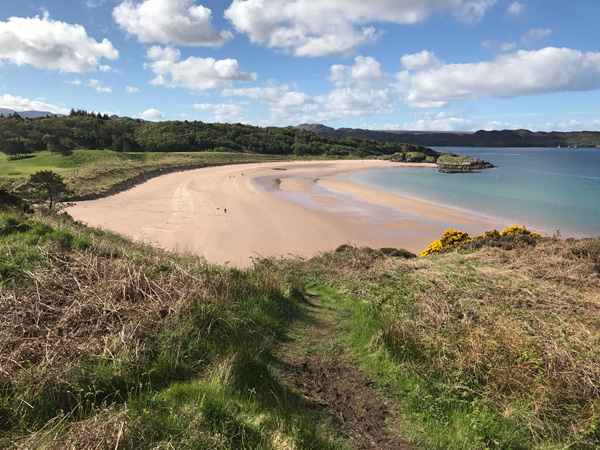

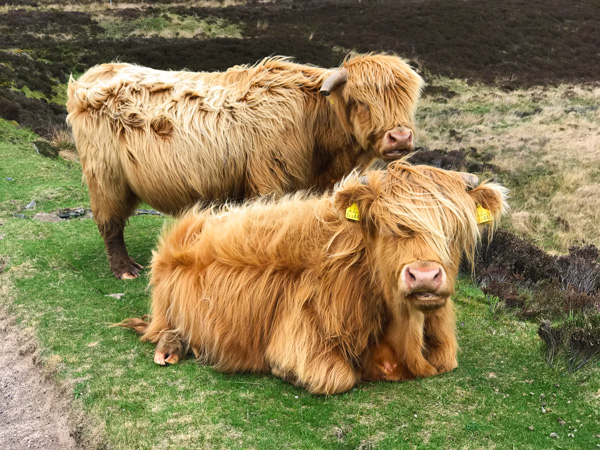

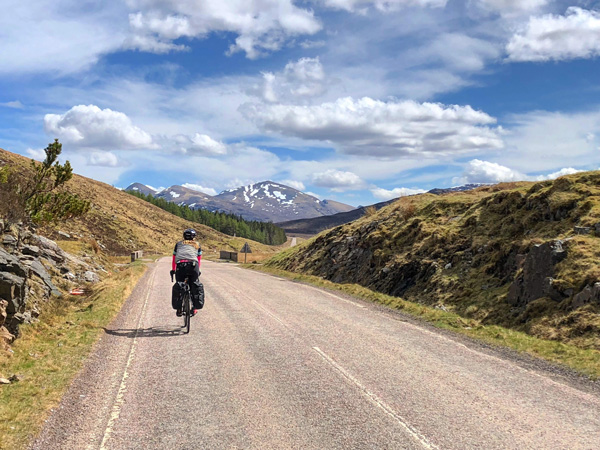
When to go
I chose early May for a few reasons — the heavy tourist season was yet to start and supposedly May offers one of the more stable weather months in Scotland. While we did experience a few days of rain, hail, and gaelforce wind, the rest of the trip remained cool but with plenty of sunny spells. Plus, springtime in Scotland is arguably one of the most beautiful times to be there, with blankets of yellow flowering gorse that fill the crisp, clean air with the scent of vanilla and almond, and the cuckoo bird whose call punctuates the bleating of the hundreds of lambs running around the fields or pestering their mothers for milk. It’s simply magical.
The other nice thing about May? No mosquitoes, or midges as they call them in Scotland.
Pack light. REALLY light
We opted to take the B&B route so we didn’t have to carry camping gear. Regardless, scrutinize the necessity of absolutely everything in your bike bags. There were moments when I cursed my laptop adding almost five pounds to my bike weight. I’ll have more details about all our gear in my post tomorrow, but in general, we could have gotten away with a lot less than we brought.
And if you opt to camp, you can easily refrain from carrying days worth of food or even a stove unless you want it for coffee and tea in the morning. There are plenty of cafes, restaurants, and shops along the route to restock or even eat all your meals out — just takes a bit of planning.


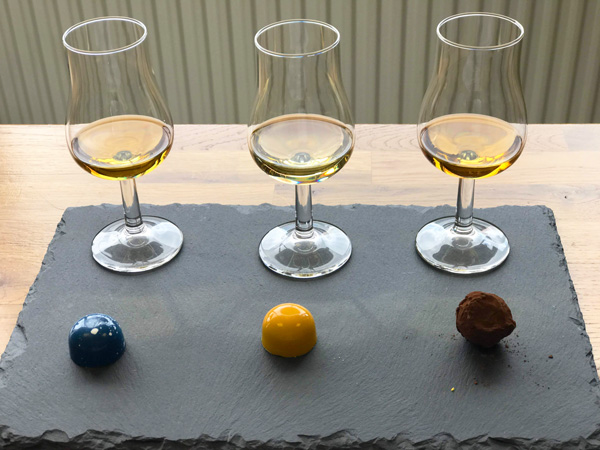

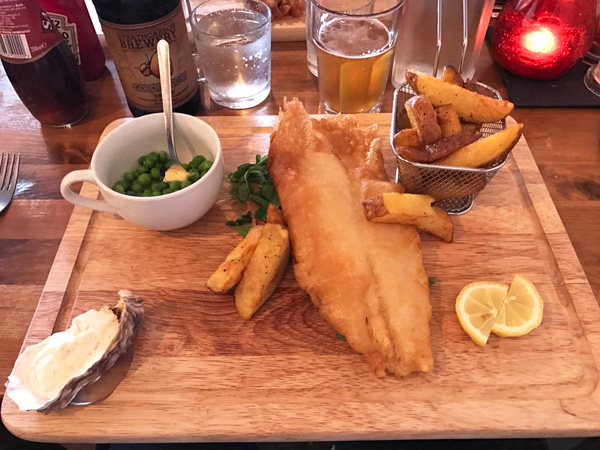
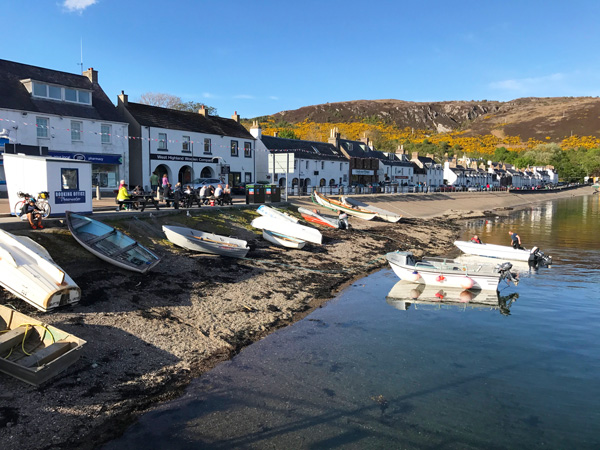
Carefully plan your route
We used the cycling itinerary from the North Coast 500 website as a guide to plan our route. We opted to complete the ride in eight days (many people do less with the record of 31 hours set by James McCallum) but looking back, I wish we would have given ourselves nine or even 10 days. Loads of elevation gain with a fully loaded bike make for long days in the saddle, especially when you factor in weather and the rough state of the roads (apart from the EU sponsored sections, ironically). Plus you want to be able to stop to take photos, hike to a castle, enjoy a lovely lunch, taste some whisky, etc.
Most B&Bs don’t serve breakfast until 8:00 am, making it tough to get an early start even though the sun comes up well before 5:00 am this time of year. During a couple of big mileage days, we were so anxious about making it to the next hotel by dinner time that we didn’t stop as much as we would have liked.
Once you have a rough idea of how many days you would like to take, I highly recommend previewing your daily routes on Strava or Komoot to see the elevation gain as well as estimated ride time — again, keep in mind you will most likely be riding much slower than you do on a normal training ride at home.
Book your accommodation well in advance
After you have decided on a rough plan, book your accommodation. The NC500 route covers a very remote section of Scotland and hotels/B&Bs/hostels are not abundant, meaning they fill up quickly. Your plan may have to change to fit in with available accomodation if you don’t book early — we ended up having to do hours of extra miles on the bike some days just to reach a place that had an open bed. Not ideal.
If you are camping, this is much easier. You can just stop when you feel like it. We ran into one gentleman who was doing just that — he would ride as far as he felt like it for the day and then camp. Similar to Scandinavia, you have the right to wild camp in Scotland as long as you do so responsibly by respecting people’s privacy, safety and livelihoods, and Scotland’s environment.
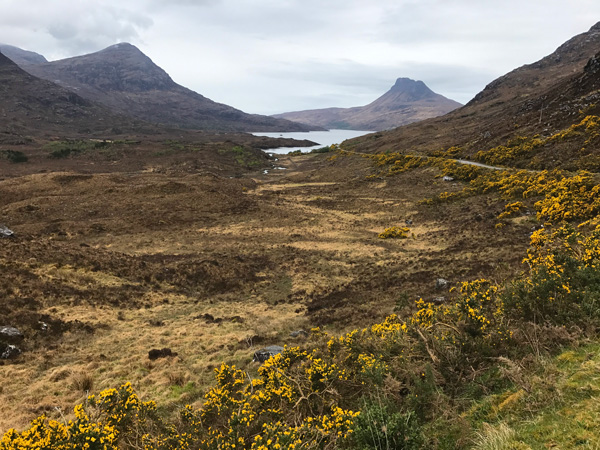


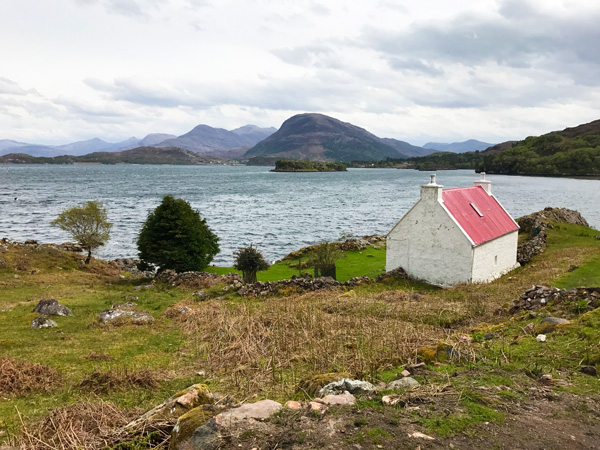
Don’t be afraid to leave the official NC500 route
The NC500 is first and foremost a driving route, evidenced by the abundance of Porsche, Land Rover, motorcycle, and camper van packs that passed us on a daily basis. Don’t be afraid to veer from the official route when planning your tour, even taking advice from locals on the day.
For example, our B&B owner in Ullapool, a cyclist himself, encouraged us to take a lesser known road to Lochinver instead of the proposed A road. I am so glad we took his advice as it was one of the prettier sections of the route. You can also skip much of the A9 south of Tain and take the backroads into Inverness instead. And looking back, I may have chosen a different route out of Inverness to get to Locharron, one that takes you by Loch Ness and Eilean Donan Castle.
We met a group of three riders in Locharron who planned to skip the entire east coast altogether and return to Inverness down through the middle via Lairg. I really enjoyed the north coast to John O’Groats but once we turned down the east coast, it was heavy motorway traffic and industrial farmland most of the way — not my favorite section.
Which way to ride
The NC500 website recommends riding in a clockwise direction from Inverness. This is the most favoured direction as the prevailing winds in the region are south-westerly. However, in the spring, the area usually experiences northerly or easterly winds so use the weather forecasts to help you choose the direction of your trip.
That being said, the wind seemed to change on us on a daily basis and as you constantly wind in and out of the coast, you never remain in a single direction for long. One of the benefits of riding clockwise, however, is that you get the major climbing over with during the first few days when your legs are relatively fresh. The north and east coast are relatively flatter than the west coast, though you still have plenty of hills. Also, you always have the coast on your left instead of across the road (you ride on the left side in Scotland, obviously).
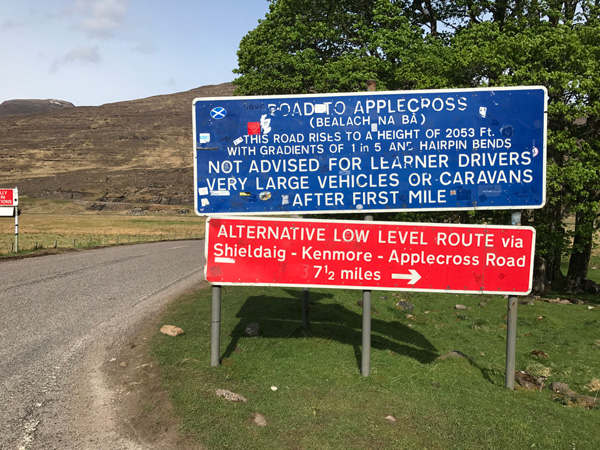
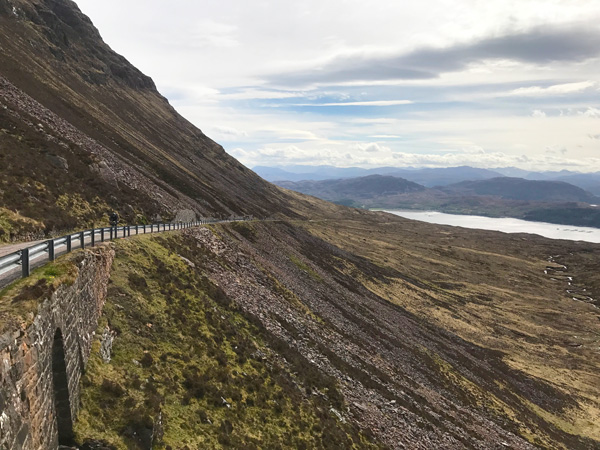

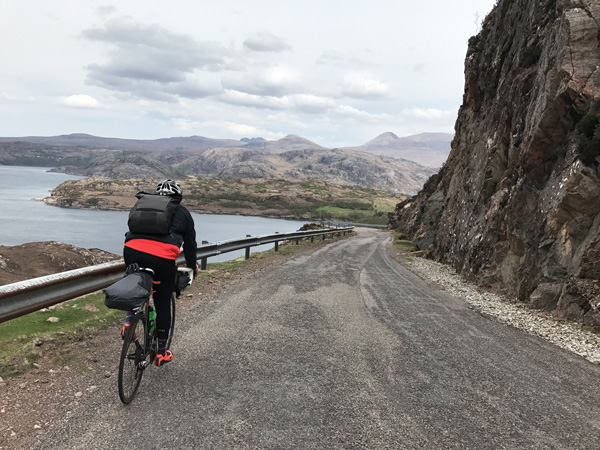

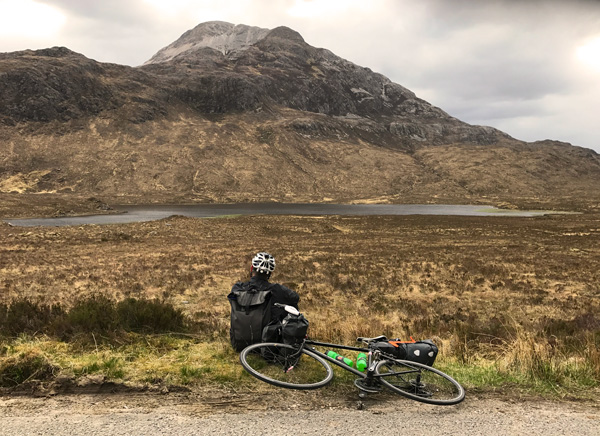
It’s not Bealach na Bà you should be afraid of…
But the endless rollercoaster of egregiously steep hills that follow — thousands upon thousands of feet worth. I actually enjoyed the 2000-foot climb up Bealach na Bà as although crazy steep near the top, the views offered much distraction from the pain. Plus I find it easier to get in a rhythm on a long climb whereas continuous punchy rollers sap my energy quickly.
As our B&B owner proclaimed about a notoriously hilly and narrow section along the B869 from Lochinver to Kylesku, where you gain and lose close to 3000 feet of elevation in 24 miles, “It’s brutal. BRUTAL. Even in a car it’s brutal.” Enough said.
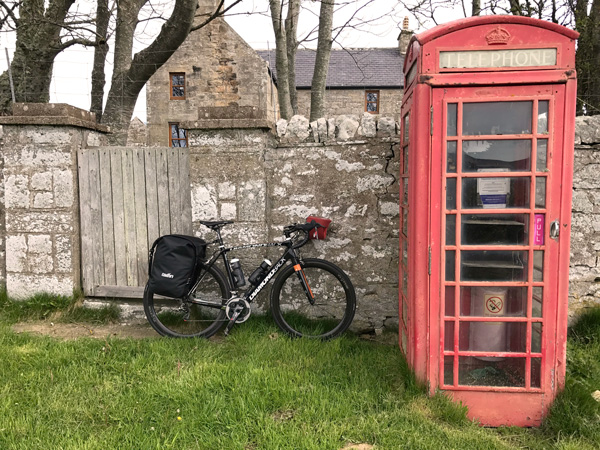
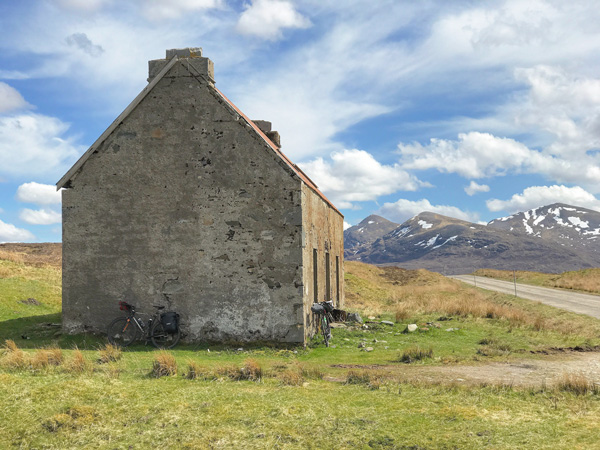

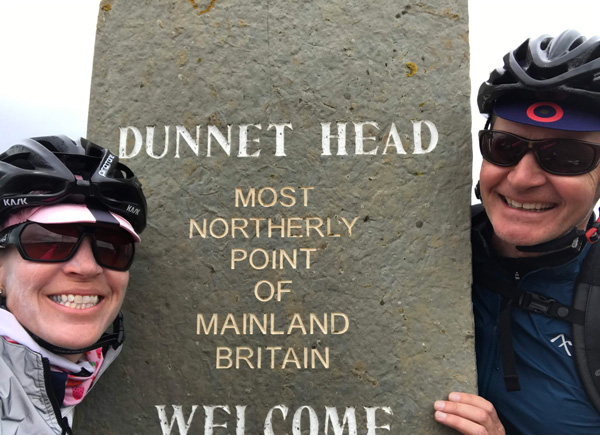
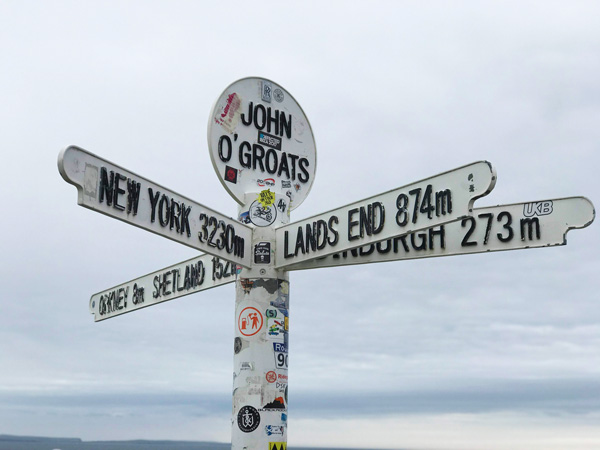

Further info
Check out the North Coast 500 website for tons of information on the route, what to see and do, as well as accommodation. They offer a detailed cycling itinerary for you to work from and also a Rough Guide guidebook that we found came in handy for finding lunch spots and sights of interest along our route. On their blog, you’ll find a few posts from local cyclist Karen Newman with tips for cyclists on alternate roads and bike shops along the way.
I’m happy to answer any further questions you might have in the comments below.


fantastic write-up. its on my list now!
Enjoyed reading your blog and glad to see that you recommended veering off the route – I think many cyclists do prefer taking the route through the ‘Heart of Sutherland’ via Lairg and Bonar Bridge to avoid the heavier traffic on the A9. I think this will be really useful for cyclists… Thank you.